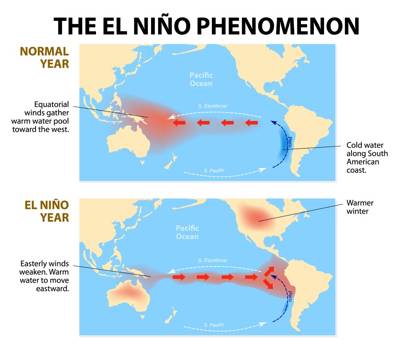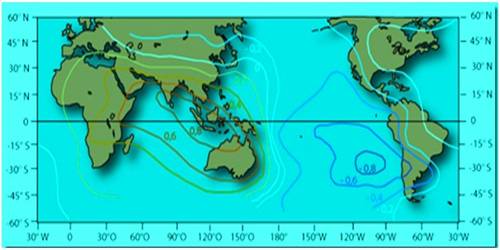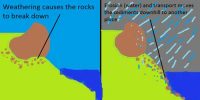EI-Nino in the Indian Monsoon
EI-Nino is a complex weather system that appears once every three to seven years, bringing drought, floods and other weather extremes to different parts of the world. El Nino is the name given to the warm ocean currents along the Pacific coast of South America that occur every few years at about Christmas time. The El Nino occurrence is an element of a sequence of meteorological events that extends from the eastern Pacific to northern Australia, Indonesia and into the heartland of India.
The system involves oceanic and atmospheric phenomena with the appearance of warm currents off the coast of Peru in the Eastern Pacific and affects weather in many places including India. El-Nino is merely an extension of the warm equatorial current which gets replaced temporarily by cold Peruvian current or Humbolt current (locate these currents in your atlas). This current increases the temperature of water on the Peruvian coast by 10°C. This results in:
(1) the distortion of equatorial atmospheric circulation;
(2) irregularities in the evaporation of sea water;
(3) reduction in the number of planktons which further reduces the number of fish in the sea.

The word El-Nino means ‘Child Christ’ because this current appears around Christmas in December. December is a summer month in Peru (Southern Hemisphere).
El-Nino is used in India for forecasting long-range monsoon rainfall. In 1990-91, there was a wild El-Nino event and the onset of southwest monsoon was delayed over most parts of the country ranging from five to twelve days.
The southwest monsoon sets in over the Kerala coast by 1st June and moves swiftly to reach Mumbai and Kolkata between 10th and 13th June. By mid-July, southwest monsoon engulfs the entire subcontinent.
















